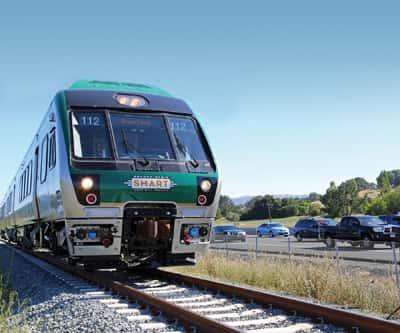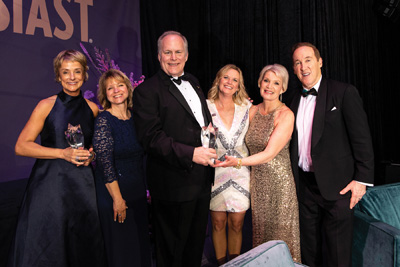NorthBay biz shines a spotlight on the economy and culture of Napa County.
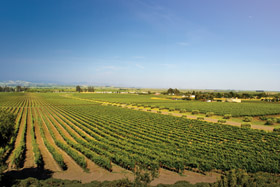 In 2014, Mother Nature made headlines for herself in the city of Napa with a major earthquake, and throughout California with a continuing and, in many places, crippling drought. In both these instances, and in everyday business, Napa County has shown itself to be a place where “working together” is more than just an ideal—it’s what comes naturally. In each of the categories covered here, you’ll likely see that characteristic at work, whether overtly or behind the scenes, and even in areas where individual interests may diverge. We’ll begin with that essential element, without which none of the updates that follows would be possible: water.
In 2014, Mother Nature made headlines for herself in the city of Napa with a major earthquake, and throughout California with a continuing and, in many places, crippling drought. In both these instances, and in everyday business, Napa County has shown itself to be a place where “working together” is more than just an ideal—it’s what comes naturally. In each of the categories covered here, you’ll likely see that characteristic at work, whether overtly or behind the scenes, and even in areas where individual interests may diverge. We’ll begin with that essential element, without which none of the updates that follows would be possible: water.On September 16, Governor Brown signed the Sustainable Groundwater Management Act, a package of three bills (AB 1739, SB 1168 and SB 1319) that, his office announced, will “put California communities on a path to become more resilient to water shortages by strengthening local management and monitoring of groundwater basins most critical to the state’s water needs.” Gov. Brown, quoted in the statement, said, “We have to learn to manage wisely water, energy, land and our investments. That is why this is important.”

“It’s definitely a new day in California for groundwater management,” says Diane Dillon, Napa County Supervisor. “We’re the last state not to have comprehensive groundwater management, yet there are still many people opposing it—and threatening lawsuits. But I’ve read the situation is so dire that the courts are most likely to find there’s a greater public interest here that needs to be dealt with.”
Change is on the horizon
“Things are going to change,” says Buzz Hines, attorney in the environmental law department of Farella Braun + Martel LLP. The San Francisco firm, which has a Wine Country office in St. Helena, gave free presentations in Napa and Sonoma in October to explain what’s known about the legislation and talk about possible impacts.
“The governor’s legislation is long and complex,” says Hines, “and its impact will be felt over time.” In its simplest form, it says you need to be operating in a sustainable, responsible manner. Hines says he thinks most people, in general, do act responsibly, especially since water is so scarce. “The scarcity and the demand associated with water—or anything else—usually has the effect of instilling in people a desire and a need to conserve and operate in a sustainable manner. I think that’s the essence of what the Groundwater Act is trying to do.” He says the act isn’t trying to impact anyone’s water rights. “What it’s attempting to do is to manage a critical resource to the state of California in a more holistic and statewide fashion than has been done before.”
Nor is the act about forcing unwelcome state control into local groundwater affairs, he adds. Rather, he says, “I think this is going to be regulated more on the local level, especially in places like Napa and Sonoma [counties], where there’s already a lot of activity in some degree of groundwater management and overall sustainability.” The state will surely be involved but, he says, “I believe the likelihood of the state actually managing any of these groundwater programs is pretty low.”
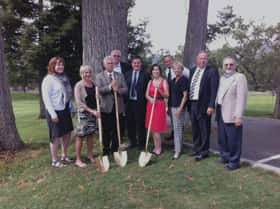 A model for water sustainability projects
A model for water sustainability projects
“A lot of what’s contained in the Governor’s bill is already being implemented in our area,” says Napa County Supervisor Keith Caldwell. “In 1997, the Coombsville area, also called the MST for the Milliken-Sarco-Tulocay aquifers, was declared by the Board of Supervisors as a water deficient area. So all new wells out there have been metered and monitored since then.” Caldwell has been working for six years with Napa County and the Napa Sanitation District on the Milliken-Sarco-Tulocay Recycled Water Project, which will bring recycled water to vineyards and landscaping in the Coombsville area, and is now looking toward the completion of the project.
Now, with 25 percent grant funding from the federal government’s Bureau of Reclamation WaterSMART program and the remaining 75 percent from a self-imposed tax on the water recipients, construction on the final phase has begun. “Never in my wildest dreams did I think it would take six years to get this done,” Caldwell says. “I was in the fire service before I got on the board of supervisors, so I was kind of used to taking 30 seconds or so—making a decision and then implementing it. But this has taken six years. And a lot of people are saying, ‘Wow, that didn’t take long.’ So I guess there are a lot of different perspectives.”
Caldwell sees this kind of project as the way for the future. “We think that, in an area where there’s shown to be overdraft and unsustainable use of groundwater, yes: Everything might be metered and monitored. It’s all pretty foreign to people in California, where you own the water rights—if you can drill it, you can have it. But in many other states, the state owns water rights and you get a permit to drill and you get an allotment of that resource.” He says anyone who doubts the need to manage water availability should take a drive into the Central Valley. “Have a look at some of the areas where the aquifers have actually collapsed and the land has dropped 10, 15, even 20 feet.” Once an aquifer collapses, it can never recharge, because there’s no more void for the water to fill. The idea is to act before that happens.
Other projects will bring water to Calistoga and to Los Carneros. The projects, subject to competitive grant solicitation for state funding, have been successful because they’re comprehensive, representing the whole the North Bay Water Reuse Authority (NBWRA), which covers Marin, Sonoma and Napa counties. Caldwell says having one environmental document covering three cooperating counties and nine different agencies, all sharing resources with the main goal of reusing as much water as possible, is an effective and winning approach.
Hines advises interested stakeholders to get involved. “In both Napa and Sonoma [counties], there are a lot of local and county resources, as well as technical advisory committee resources,” he says. “There’s a lot of activity with respect to groundwater on the local level already and, no pun intended, I ‘ recommend people ‘tap’ into those resources: Get on those mailing lists, identify themselves as interested parties, go to the workshops, go the county supervisors meetings where it’s an agenda item or where it’s a breakout session, and really stay involved on that basis. On a county level, keep up with what the Board of Supervisors is doing in Napa. On a statewide level, follow what the Department of Water Resources does very closely. I would also follow very closely what the State Water Resources Control Board does.
Allowing that some could view this coming legislation as an onerous government intrusion, Hines says “properly managed, the resource [water] is going to last longer—so that’s a good thing. And to the extent that it makes people work together to manage that resource, then that’s a positive benefit, too.”
Back to the land
For Napa Valley to have remained the scenic agricultural paradise it is, in the year 2014, isn’t something to be taken for granted, as those who have been here a long time will remind you. “It didn’t just happen,” says Andy Beckstoffer, grower and longtime champion of the Ag Preserve. In 1968, after a long battle between those who saw the need to preserve the essential nature of Napa Valley and those who would leave it open to development, Napa County became the first in the country to create an ordinance that formally recognizes and preserves the agricultural nature of the place, which is now as famous for its beauty as for the winegrapes the land produces.“It’s been a long fight. Everybody always wants agriculture preserved, but on their own terms, and sometimes that just doesn’t work.”
Napa Valley draws people to its beauty. People want to build wineries and luxury inns here because it’s a special area. Maintaining the beauty and agricultural character of the place, while accommodating the people who come here to enjoy it, is increasingly becoming a matter of balancing individual or business desires with the integrity of the preserve. Local concerns are now more typically focused on environmental concerns like water and traffic.
“I live on Zinfandel Lane,” says Beckstoffer, “where there’s already seven wineries and the traffic is unbelievable.” Traffic isn’t just an inconvenience, but an environmental issue, he says, affecting air and noise, as well as local and visitor experience. “We’ve heard from the smaller wineries saying, ‘Look! All this traffic is killing my business! People are simply not going to come up here and fight the traffic. They’ll go to Sonoma or someplace else!’ So they’re beginning to be very concerned about it.”
For him, the bottom line is, “When you have development, it should have some community good.” He’s concerned about whether or who in the next generation will step up to help fight for the preserve. “There has to be some new generation who pick up that mantle,” he says. “Growers and vintners. But it’s just hard. It’s not fun getting out there and objecting to your neighbors. People say, ‘Well, the county doesn’t specifically say I can’t do it, so I’m going to do it!’ But why should the community as a whole be required to suffer environmental damage for the profits of the few?”
Supervisor Brad Wagenknecht remembers four years ago, in the middle of the recession, “There were people coming down to the Board of Supervisors demanding we break up the winery definition or that we change it from being so restrictive to allow for more things, like weddings, restaurants and other uses.” He pauses. “I can only imagine, if we’d have done that, what we’d have now.”
Now that the economy has come back, the situation has reversed, he says, and the Board is getting choked with large winery applications, with wineries wanting to do lots of visitor events, and with public comments about how quickly we’re growing and how fast, how wrong it all is. “We were right not to throw the door wide open four years ago,” he says, “and we’ll be right not to throw a moratorium on it right now.” The Board wants to “measure twice and cut once—be very cautions about what they do.”
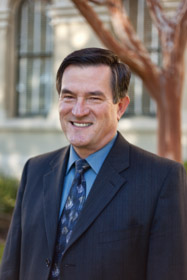
“The real question is,” says Supervisor Mark Luce, “Is there any reason we should be building more wineries in our Ag Preserve? If the answer is no, then it doesn’t mean more wineries won’t be built, but they’ll be built in our urban areas, within our industry and city boundaries instead of out where our vineyards are right now.”
He says the answer may be that we’ve permitted enough, especially since some wineries are permitted for larger volumes than they’ve actually built. “So we have all this permitted capacity that’s not under construction or, it appears, isn’t going to be under construction. Should we cause those permits to expire? And if so, should we give that permit to someone else? Or do we just say it’s there, it will be built when needed, and in the meantime, no more wineries.”
“If you look at every winery application,” says Beckstoffer, “you can say, ‘Well that doesn’t add much. But at some point, you have the straw that breaks the camel’s back.”
It’s not all about wineries
“We have another challenge,” says Dillon, “which is that the city of St. Helena has become more dependent on tourism and the tax revenue it brings in. So people in town mutter to each other about, ‘Do we really need any more hotels?’” But, she points out, the small towns that used to make their revenue from healthy sales tax from local shops, which have mostly faded away, now are dependent on tourism. The very locals who complain about the traffic and hotels are at least partially responsible for the change. “We changed the way we shop,” she says. “We go to Amazon instead of downtown.” And local businesses suffer and the cities lose sales tax.
“We have to find a balance,” she says. “St. Helena is a small town, and I don’t think the citizenry wants a lot of hotels. But it has to have a few. Until we all understand the problem, we can’t begin to work together on how to solve it. We need more discussion.”
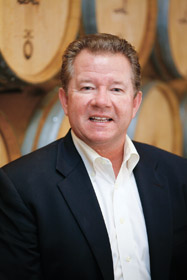
Without water, scenic beauty or hotels to stay in, tourism to Napa Valley would face a serious challenge. Nobody wants to come to play in an area that’s lacking or distressed. Similarly, without the business tourism brings, the valley would face a challenge. No one is more aware of this than Clay Gregory, CEO of Visit Napa Valley, which is charged with the strategic marketing and branding the valley as a tourist destination, and whose success can enhance or, if out of balance, detract from the quality of life here. Right now, he says, the valley is seeing a comfortable, but not oppressive, level of growth.
“Tourism is up this year about 6.5 percent in lodging revenue,” he says, “and 8.4 percent up for the last 12 months. We’re seeing nice growth.” Since 2010, when the Napa Valley Tourism Improvement District, which funds Visit Napa Valley, was formed,the organization has been conscious of appealing to visitors who appreciate the special nature of the valley and marketing accordingly. “We’ve been very careful to get the message out that we’re not about over-burdening the infrastructure here,” he says. “We’re not about building a conference center, we’re just about filling in the ‘need’ times.” He freely acknowledges that if the traffic becomes “overbearingly bad,” it wouldn’t be a pleasant experience for anyone.
“One of the things that’s really helped us, from a community relations standpoint and a credibility standpoint, is we’re really only marketing what we call ‘Cabernet season,’ which is November through April, and weekdays. The only spending we do to bring people here between May through October is for group business, as that takes place midweek when we sometimes have a need. On the consumer front, our weekends are full from May to October, so we’re really not spending any money on building leisure travel during that period.”
He cites a 2012 study about Napa tourism, conducted by Destination Analysts of San Francisco, which showed two important insights as to how the valley is viewed by visitors. First, that the thing people loved most about their experience was the scenic beauty, followed by the wine; and second, that the only significant thing they were concerned about or would want to improve was traffic. “We talk a great deal about Napa Valley having the first agriculture preserve in the United States,” says Gregory. “And, as a tourism organization, we’re incredibly thankful for that, because otherwise, this could have become like Silicon Valley, where I grew up. So we’re all about keeping the valley as pretty and beautiful as it is.”
He’s well aware of the paradox at play. “I sometimes think people think it’s counterintuitive that the destination marketing organization is positive about agricultural preserve, but that’s what people enjoy most about the valley, so it’s important.”
Napa arts
In a 2005 Purdue study on tourism in the valley, two other common comments stood out: One, that there was nothing to do after dinner and two, that there was no mention of the arts whatsoever. Now, says Gregory, that’s all changed. “We now have two performing arts centers in the city of Napa that are thriving, as well as the Napa Valley Performing Arts Center at Lincoln Theater in Yountville. And then there are smaller venues like Silo’s Jazz club in downtown Napa. So now there really are things to do at night.” He notes that much of downtown Napa stays open very late, some until 2 a.m., when performances at taking place at the Uptown or City Winery.

The City Winery, housed in the Napa Valley Opera House, is a unique concept blending wine, food, music and entertainment. The concept was started in New York by Michael Dorf, who now has venues in New York, Chicago, Nashville and Napa. “It’s a really cool nonprofit/for-profit arrangement, which works because the nonprofit Opera House wasn’t sustainable,” Gregory says. “So City Winery books most of the evenings, but the nonprofit Opera House books 75 evenings per year. So, almost every single night, there’s a show.” This, says Gregory, is a boon to the Opera House, letting it stay open, and a boon to the surrounding area, because ancillary businesses can now stay open late to accommodate patrons.
The local art scene is also thriving. “We’re seeing more galleries,” confirms Gregory, “including outdoor installations, like the Napa Artwalk and Yountville Art Walk, which didn’t exist very long ago.” Arts in April, a month-long, Valley-long celebration of art, is produced by Visit Napa Valley together with the Napa Valley Arts Council. The collaboration was so successful that the two groups were recognized by Visit California with a 2014 Poppy Award for best Regional Collaborative Marketing Campaign. “We needed to do something special to draw people in during April, so the whole month is about arts,” says Gregory, who credits two of Napa’s longtime leaders, Margrit Biever Mondavi and Robert Mondavi, for their primary inspiration for supporting the arts.
 Traveling the valley
Traveling the valley
The county is well aware that traffic is a problem up and down the valley, and the Napa County Transportation and Planning Agency (NCTPA) is now working on a 25-year, countywide plan to improve transportation and alleviate traffic congestion. Executive Director Kate Miller says she expects this plan to deal with challenging issues, such as what can be done with limited resources. “It will probably mean implementing a number of traffic demand management measures. These are tools we can use that will significantly help improve transportation with the limited resources we have. We need to consider how we can better use technology to manage traffic congestion and improve transportation options for Napa’s residents and visitors: ‘How can we continue to improve our transit system?’ and ‘How can we get people to consider car-free tourism?’”
She says NCTPA is already looking into alternative transportation ideas like car and bike sharing. “VINE Transit already has several routes that connect people on the weekdays to BART and Amtrak and the Vallejo ferry. We want to give some thought to what we can do on weekends to accommodate people who are visiting here.”
To understand causes for the increase in volume along Highway 29, NCTPA is conducting a study to determine who’s driving in Napa, where they’re going, where the trips start and end and for what purpose. “We’re sending surveys to large employers, and we also conducted surveys at some of the wineries,” she says. “We’re looking at cellphone data to see where the traffic is coming in and where it’s going out. We’re conducting license plate surveys generated from photos taken of plates at strategic locations—people who live here and people who’ve visited here, so we understand the reason they came, when they arrived, how long they stayed and what they did when they were here, so we can get a better feeling for how we might design our transportation system around demand.”
Concerns for privacy have been voiced in local papers, and she says she understands. “We’ve made sure that all of our consultants have signed agreements to protect the privacy of individuals. People can, obviously, elect not to respond to the survey. But I think that would be unfortunate, because we really want to know what people here in Napa want in a transportation system. We need to hear particular issues they’re concerned about. But we also want to make sure we’re serving people who are visiting here and [living outside the valley but] working here.”
Meanwhile, the $127 million Jameson Canyon Road widening project was completed in 2014, and Highway 29 channelization projects will soon be underway in St. Helena’s Zinfandel Road area. In Napa, a $347 million Highway 29 Gateway Corridor plan has been proposed to improve flow from Vallejo to Napa.
“We’re working diligently to be innovative,” says Miller, “but we have limited resources and limited staffing, and things just take time. We have a very creative staff, and I think there’s an opportunity for new revenues to support the infrastructure. It’s very clear, if you’re in this business, that there’s just simply not enough money to maintain the massive infrastructure we have anywhere—and when you’re in a small county competing with large, huge counties in the state, it’s an every greater challenge. For us to really do some meaningful improvements to some of the more congested areas, it’s going to have to take additional revenues from somewhere.”
The Vine Trail
While traffic represents a bane for residents and tourists along the Vine Trail will, in the foreseeable future, represent an attractive and creative alternative for getting up and down the valley.
“We are a significant financial contributor to the Vine Trail and big proponent of it,” says Gregory of Visit Napa Valley, “and in May 2015, ground will be broken on the single most important piece, running from the north of Napa up to Yountville. It’s a six-mile stretch that will be completed in a relatively short amount of time.” When finished, cyclists will be able to bike safely from Napa to Yountville, alongside Highway 29, but well out of the way of the traffic.
This is an example of the kind of collaboration—a successful public/private partnership—Napa seems to thrive on, whether in health, education, water or getting from place to place. “The Napa Valley Vintners are the ones who really started that whole collaborative approach,” says Gregory, “and the Vine Trail is exactly that. So there are hotels and the local tourism improvement committees contributing funds; we’re contributing funds; the Napa Valley Vintners are obviously contributing funds. There are also private donors contributing funds, many of whom are anonymous.” He says all those base funds that individuals and entities contribute will be matched 3:1 by various government organizations—county, cities, the state and federal governments. “Governments like things that are green and healthy,” he says, “and the Vine Trail is both. So it couldn’t be a better example of a public/private partnership.”
Calling Napa home
Luce is particularly proud of the Work Proximity Housing Program, which has now created 50 new homeowners, and provides down payment assistance of up to 10 percent of the price of a home for qualified buyers.
“This is not low cost housing,” says Luce. “This is real home ownership. We work with buyer management to help people buy homes within 15 miles of where they work.” This helps reduce miles traveled, lessens the impact on air quality and improves livability of the area. “We’ve helped 50 low- to moderate-income families buy homes,” he says. He allows that, with 30,000 documented commuters in the county, 50 families does not solve the problem—but it’s a start. Plus, when families pay back their loans, they’re paying on the home’s value, which increases over time. “So we’ve seen $25,000 loans come back as $40,000 in a year and a half because of the appreciated value of the home,” says Luce. “It’s a very effective program at getting more home ownership in our community.”
Napa Pipe, the long awaited (and oft-disputed) development in southeast Napa, is a solution waiting to happen, with 945 housing units, retail including Costco, a senior care facility and commercial opportunities all to be built on previously zoned industrial land. “I hear people talk about how bad the traffic is,” says Caldwell, “and how almost impossible it is to get out of Napa in the afternoon. That’s because Napa imports approximately 30,000 workers on a daily basis. So providing housing where people can actually live and work in the same area is a winning concept.” The project is moving forward, slowly, and, whether voters agree the city should annex the property or not, the city will provide water to the development.
Healthy living
In February 2014, Live Healthy Napa County, a Napa County public/private partnership formed in 2012, released the 2014-2017 Community Health Improvement Plan, a 46-page document that follows up the Napa County Community Health Assessment, released in 2013, and addresses the key public health issues in the Napa community and developing strategies for improvement. The 2014-2017 Community Health Improvement Plan (CHIP) takes the data gained from the Community Assessment and moves toward a comprehensive plan for improved community health. The document covers all aspects of public health and presents a profile of Napa County as a very healthy place to live. But there are also some expected and unexpected health challenges.
Overall, Napa County residents rate themselves as having good to excellent health, and this—how you rate your own health—is a pretty good indicator of your actual health, says Jennifer Henn, Ph.D., an epidemiologist with the Napa County Health and Human Services Agency. “We have a lot of clean, safe neighborhoods with access to recreation, a good school system, strong economy and local jobs. The teen birth rate has been steadily going down, which is a really good sign, and we’re meeting or exceeding the national standards for maternal and child health. Generally, we have a strong local public health system and strong community involvement is a real plus, so those were the strengths.”
The fact that Napa ranks higher than national standards in many areas doesn’t mean the county can relax, however. The organization wants everyone to be healthier. “If 40 percent of our fifth, seventh and ninth graders are overweight or obese, and that number is better than the state average, that’s not saying much,” says Henn. “And because health is something we do want to improve, then certainly, overweight and obesity are areas we really do need to work on.”
That the assessment showed drug and alcohol abuse to be a serious concern both among adults and teenagers didn’t come as a huge surprise to her. “We’ve known for years that we have high levels of binge drinking,” she says. “But we were a little bit surprised at how much marijuana use we saw in the survey of ninth and 11th graders, which was higher than we had expected. We were also surprised at how many 11th graders reported either that they’d driven a car under the influence of a substance or had been in a car with somebody who was under the influence of a substance,” she says. The group was also surprised by the high number of ninth and 11th graders who reported suicidal thoughts in the last 12 months.
She says the collected data is one tool, but then HHS looks to the community to find the best approaches and areas to focus on. “We were really lucky to start with a strong peer group,” she says. “At the beginning of the Live Healthy Napa County process, we had all three major hospitals invested in this. We had the nonprofit coalition invested, and we have our Health and Human Services Agency fully committed.”
“One of our health officers’ primary goals throughout this whole process has been making the healthy choice the easy choice, so we’re not looking to take things away from people,” she says. “We’re looking to make it easier to make the choice of healthy, and that comes in all sorts of forms, including offering healthier food, opportunities for active transportation—to walk or bike—to education. It’s not a deficit model. It’s really about everybody in our county, regardless of color of their skin, socioeconomic status, gender or age, having equal access to health.”
 New education model
New education model
Napa County schools are moving from the old style, with a teacher lecturing in front and students staring glassy-eyed in rows, to a 21st century model, with kids working on projects in groups, with laptops or tablets, and the teacher and even community experts serving as facilitators. In the Napa Valley Unified School District, this transformation is now taking root with 10 schools transformed to the new model. Superintendent Patrick Sweeney is pleased—and maybe a little surprised—with the observable progress. “I thought it would be more difficult to implement the new way of teaching, which is rigorous, engaging and works on real-world problem solving, because it’s so different from the old way of teaching.”
So far, though, the results are easy to see: “Students like to come to school!” says Sweeney, with amazement in his voice. “When you have middle and high school students excited to come to school, that’s a really good thing.
“Our attendance rates are up, the student discipline is better. Students are behaving better, because they’re engaged and working on real world problems that are exciting to them.”
Making the transition is more challenging for teachers, but, he says, they’re accepting the new way, too. “Our teachers are now at a point where the ones who’ve been teaching in the new way for a while are feeling comfortable and the teachers who are new to it appear open to learning it.”
Sweeney credits three partners, including NapaLearns for helping pay for scholarships for more than 70 Napa County teachers to go to Touro University in Vallejo to get their MA in educational technology and funding for professional development. New Tech Network provided “the models of change to transform the school culture at each site and a learning management tool that lets students and teachers share lessons, grades and assignments,” he says. And Buck Institute for Education provided professional development so teachers could deliver quality, project-based learning experiences. This support, along with the seed funding NapaLearns also provided, helped the district get the initial transformation off the ground three years ago and continues to ensure teachers get the training they need.
Peg Maddocks, executive director of NapaLearns, says she’s excited and gratified to see that the money community donors have invested in education transformation through NapaLearns is paying off. She’s particularly proud that Calistoga Elementary, part of a school district with 73 percent poverty and the first school to benefit from the NapaLearns Digital Early Learning pilot program, went from having been in “program improvement” for five years and is now recognized as a California Distinguished School and also a 2014 National Blue Ribbon School. She says iPad-based Digital Early Learning is improving literacy by 35 to 40 percent and is closing the achievement gap in pre-K though second grade classrooms using one-to-one technology and blended learning programs. On the higher end of learning, she says Napa New Tech High School, which uses the technology-enhanced, project-based learning model, reports that graduates show 158 percent more improvement in “deeper learning” (the term currently being used to describe the engagement of students in learning) than a national comparison group on an assessment of critical thinking, analytical writing and college readiness.
Nonprofit culture
The September 6.0 South Napa earthquake brought several facts into focus: first (right after the reminder about nature being powerful and unpredictable) that Napa knows how to work together; second, that Napa’s nonprofit culture is strong, and third, that when it comes to a disaster, these factors, plus leadership and preparedness, make all the difference.

Early on, when government relief efforts, like FEMA, were uncertain, Napa Valley Vintners (NVV) established a disaster fund with a pledge of $10 million. “We realized we needed to do something,” explains Russ Weis, president of the Napa Valley Vintners’ Board of Directors. Because NVV was prepared financially (but not structurally) to do what needed to be done, the decision was made almost immediately to work with Napa Valley Community Foundation (NVCF) to administer the fund.
“We got the outline Tuesday morning and had the board meeting that afternoon on Wednesday [the earthquake was the previous Sunday at 3:20 a.m.]. That’s when we decided to create the fund and to seed it as well.” He points out that the fund isn’t called the “2014 Earthquake Relief Fund,” which would have a specific beginning and end, but the “Napa Valley Community Disaster Relief Fund,” which NVCF can maintain for future emergencies as well. “We’ve done a lot of work over the last 10 years, as the scope of the auction has grown, to try to understand what it means to be a good philanthropist,” says Weis. “So to be very involved in our community isn’t new. What’s new is emergency stuff. I really think this highlighted a need that we’re going to be working on with the Community Foundation going forward.”
 “We’re really pleased to be able to steward this gift,” says Terence Mulligan, chief executive officer of NVCF, which, as of the end of October 2014, has seen $488,000 more in gifts from 393 individuals and companies, ranging from a first grade classroom to major wineries. “This is a generous community,” says Mulligan, “a community where neighbors are eager to lend a hand to those in need.
“We’re really pleased to be able to steward this gift,” says Terence Mulligan, chief executive officer of NVCF, which, as of the end of October 2014, has seen $488,000 more in gifts from 393 individuals and companies, ranging from a first grade classroom to major wineries. “This is a generous community,” says Mulligan, “a community where neighbors are eager to lend a hand to those in need.Raising money is one thing, but assessing needs and disbursing funds is a whole other, complicated process. “The way we’ve approached the work to date is in three phases,” Mulligan says. “The first phase is about recovery and immediate assistance. On September 19, we announced the first round of grant distributions to 20 nonprofit agencies in Napa county that are on the front lines when it comes to helping families impacted by the quake.” This included everything from the Napa Valley Food Bank, to a nonprofit mental health services clinic, family resource centers and first respondents like Red Cross.
“Part of that first grant, about $1.2 million, went to stock up a half dozen emergency assistance accounts at local nonprofits already offering short-term financial aid to vulnerable families. Those agencies are seeing a lot of folks, typically renters rather than homeowners, plus a lot of seniors and lower-income families, who aren’t just talking about putting a new roof on their house, but who lost a bed during the earthquake or lost a refrigerator or need a new place to live and can’t afford to move.”
He says the next phase of work is about rebuilding. “That’s about getting people back in their homes safely. It’s about helping businesses get back up and running again.
“We’re making some judgment calls about where we think the greatest areas of need might be. Again, we aren’t the federal government. We’ve done everything we can in partnership with local government, the business sector and the nonprofit sector to get dollars here and to make the case, but ultimately, we have to make some calls about where to focus the resources.” He’s taking advice from the IRS, outside legal counsel and other community foundations all over the country. “You have to build something that’s really robust and staff it with partners,” Mulligan says. “It’s not me who’s sitting behind the table of the local assistance center with the checkbook. We find nonprofit partners to do that work, because they’re in that business day-to-day.
“So many of the things we worry about in our current civic life in this country come down to inequality and poverty,” says Mulligan. “You can talk about education all you want—and I was thrilled the Community Foundation was able to bring Sal Khan to Napa so he could share his vision about what’s possible in a classroom. [Kahn, an education technology guru and director of Kahn Academy, spoke in Lincoln Theater after the quake, continuing in the dark when the electricity went out, by the light of room full of iPhones.] But at the end of the day, if a third grader is showing up hungry to school and has slept fitfully in an overcrowded housing situation, you have underlying core issues to deal with.”
Back to the water
Last but not least, the Napa River, which is bone dry up-valley, is looking good from the waterfront in the city of Napa. Wagenknecht says the city is getting close to completing the Napa River Flood Project, and says there are river restoration projects going on upstream, from Oak Knoll to Rutherford, for which the neighbors along the Oak Knoll Reach have taxed themselves. “The public needs some money to restore some parts of that river,” he says. “We’re going to run out of our Measure A funds, and I’d like to see something more done with our river for the long term.” With drought such an ever-present concern, thoughts about river flooding loom only in the distance, but it’s what the Napa River does, typically, and hopes are always that the Napa River Flood Project will do its job when those days return.
Until then, the guiding concept for the county of Napa seems to be that, when groups have worked together (as they did to bring the Flood Project together), the seemingly insurmountable in both nature and human nature can be resolved. This year’s events and future challenges seem to offer plenty of opportunity for Napa County leaders and residents to practice this essential, cooperative skill.


